 In the modern era, technology has become one of the most important requirements in businesses. Apart from automating tasks to helping in decision-making, business technologies today have changed the corporate world for the better. In this article, we will answer your question, “What are the 5 most common types of business technology?” We’ll also discuss their key features and benefits to help you understand how they can help your small business.
In the modern era, technology has become one of the most important requirements in businesses. Apart from automating tasks to helping in decision-making, business technologies today have changed the corporate world for the better. In this article, we will answer your question, “What are the 5 most common types of business technology?” We’ll also discuss their key features and benefits to help you understand how they can help your small business.
What is business technology?
Business technology is the application of various tools, software, systems, and hardware to facilitate and enhance operations within a business organization. It includes a wide range of technologies that support large and small business functions. This includes communication, data management, finance, marketing, human resource, and a lot more.
Business technology helps businesses to streamline processes, improve efficiency, and make informed decisions, thanks to data analysis. In addition, business technology helps companies adapt to the ever-changing demands of the modern market and keep up with competition.
Benefits of business technology

Integration of business technology has become a game-changer in the industry. It offers a lot of advantages for organizations. The benefits of using technology in business are undeniable and play an important role in achieving a company’s growth and success.
Here are some of the benefits of business technology:
- Increased Efficiency. Business technology automates time-consuming tasks and streamlines processes, leading to improved productivity and reduced manual errors. This allows employees to focus on more strategic and value-added activities, ultimately boosting overall efficiency.
- Enhanced Communication and Collaboration. Technology tools such as email, video conferencing, project management software, and cloud-based platforms facilitate seamless communication and collaboration among teams, regardless of geographical location. This enables faster decision-making and smoother project execution.
- Better Data Management and Analysis. Business technology allows organizations to collect, store, and analyze vast amounts of data. This data-driven approach provides valuable insights into customer behavior, market trends, and operational performance, enabling businesses to make informed decisions and stay competitive.
- Increased Customer Satisfaction. Through customer relationship management (CRM) systems, online support channels, and personalized marketing strategies, business technology helps improve customer interactions and satisfaction. Satisfied customers are more likely to become loyal and repeat buyers, contributing to long-term business success.
- Competitive Advantage. Embracing cutting-edge technologies can give businesses a competitive edge in the market. By staying ahead of industry trends and leveraging innovative solutions, companies can differentiate themselves, attract more customers, and position themselves as leaders in their respective fields.
You might also like: What are the 3 Important Types of System Software?
What are the 5 most common types of business technology?
1. Productivity Software
Productivity software is applications and tools that aim to increase efficiency, organization, and collaboration in both personal and professional environments. These software solutions help users manage tasks, data, and communication effectively, leading to enhanced productivity and streamlined workflows.
Here are five examples of productivity software:
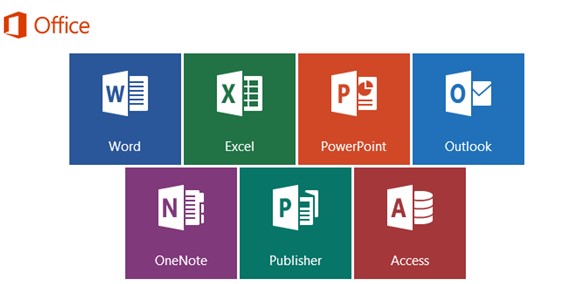
This comprehensive suite includes popular applications like Microsoft Word (for word processing), Microsoft Excel (for spreadsheets), Microsoft PowerPoint (for presentations), and more. It is widely used in various industries for creating, editing, and sharing documents.
2. Google Workspace (formerly G Suite)

Google Workspace offers a suite of cloud-based productivity tools that include Google Docs (for word processing), Google Sheets (for spreadsheets), Google Slides (for presentations), as well as Gmail, Google Calendar, and Google Drive for collaboration and storage.
3. Trello
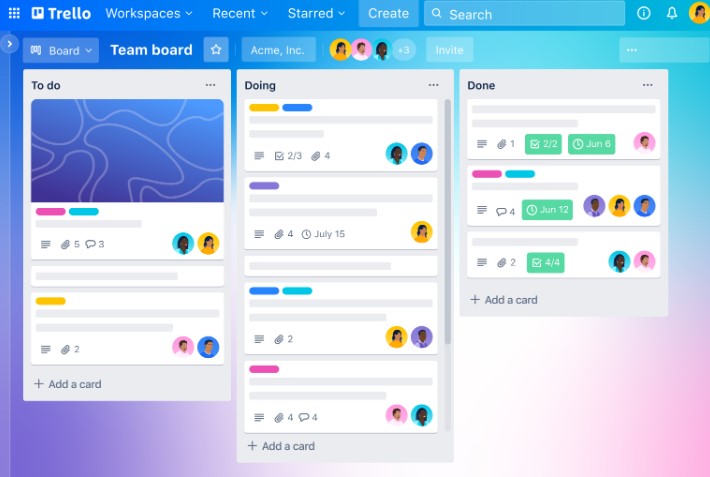
Trello is a project management tool that uses boards, lists, and cards to help individuals and teams organize tasks, set deadlines, and track progress, making it ideal for project planning and task management.
4. Evernote

Evernote is a note-taking app that allows users to capture ideas, create to-do lists, organize web clippings, and sync data across devices, facilitating seamless information management and easy access to important notes.
5. Slack

Slack is a communication and collaboration platform that enables real-time messaging, file sharing, and integration with various other productivity apps. It enhances team communication, reduces email clutter, and fosters a collaborative work environment.
2. Inventory Control System
An Inventory Control System (ICS) is a set of practices, processes, and tools that businesses use to manage and track their inventory efficiently. It involves maintaining accurate records of stock levels, monitoring inventory movements, and optimizing inventory levels to ensure smooth operations and minimize holding costs.
Here are five examples of Inventory Control Systems:
1. Perpetual Inventory System. This system maintains a continuous and real-time record of inventory levels by updating stock quantities after each transaction. It provides an up-to-date view of available inventory and helps prevent stockouts or overstocking.
2. First-In, First-Out (FIFO) Method. FIFO is an inventory valuation method that assumes the first items purchased or produced are the first ones sold. This approach is commonly used for perishable goods or products with limited shelf life.
3. Just-In-Time (JIT) Inventory System. JIT aims to reduce inventory carrying costs by receiving or producing goods just in time for use or sale. This system minimizes storage expenses and improves overall efficiency.
4. ABC Analysis. This categorizes inventory items based on their value and usage. “A” items are high-value, critical items, “B” items are moderate-value, and “C” items are low-value, non-critical items. This method helps prioritize inventory management efforts based on their significance.
5. Barcode-Based Inventory Management. Barcode systems use unique barcodes to label and track individual inventory items. Scanning barcodes during various inventory transactions allows for accurate and efficient data capture and helps streamline inventory control processes.
3. Financial Accounting System
A Financial Accounting System is a comprehensive software solution used by businesses to record, process, and manage financial transactions and generate financial statements. It is crucial for tracking the financial health of the organization, preparing accurate financial reports, and complying with accounting standards.
Here are five examples of Financial Accounting Systems:
1. QuickBooks

QuickBooks is a widely used accounting software designed for small and medium-sized businesses. It enables users to manage income and expenses, track invoices, process payroll, and generate financial statements like balance sheets and income statements.
2. Sage Intacct
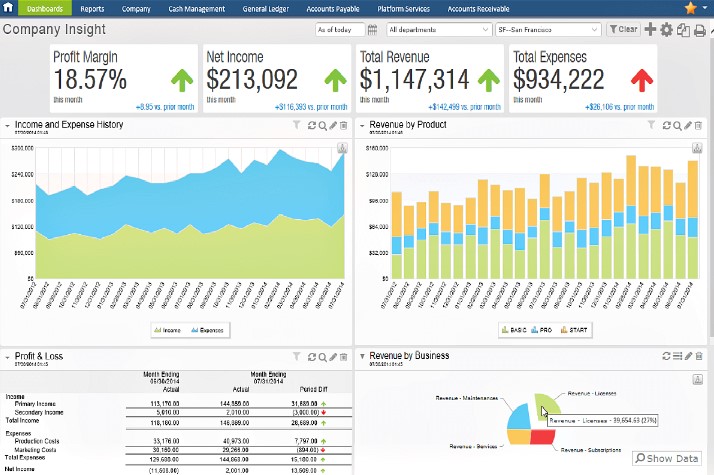
Sage Intacct is a cloud-based accounting software solution aimed at mid-sized businesses and enterprises. It offers a range of financial management features, including accounts payable and receivable, budgeting, and financial reporting.
3. Xero
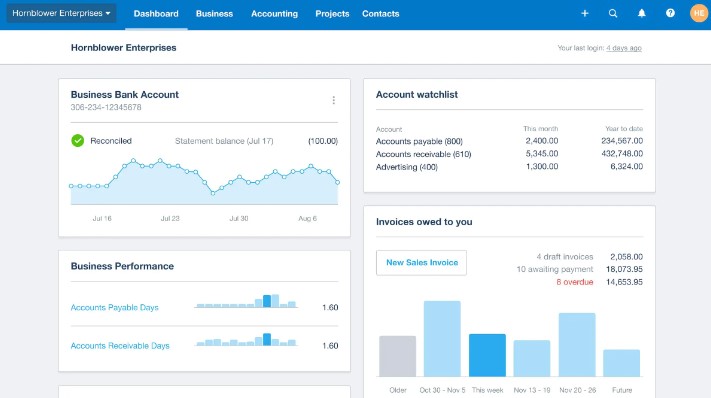
Xero is a cloud-based accounting platform that caters to small businesses and startups. It provides tools for invoicing, bank reconciliation, expense tracking, and financial reporting, making it easier for businesses to manage their finances on the go.

SAP Business One is an integrated enterprise resource planning (ERP) system that includes financial accounting capabilities. It offers a suite of tools for managing various financial processes, such as general ledger, banking, and financial reporting.
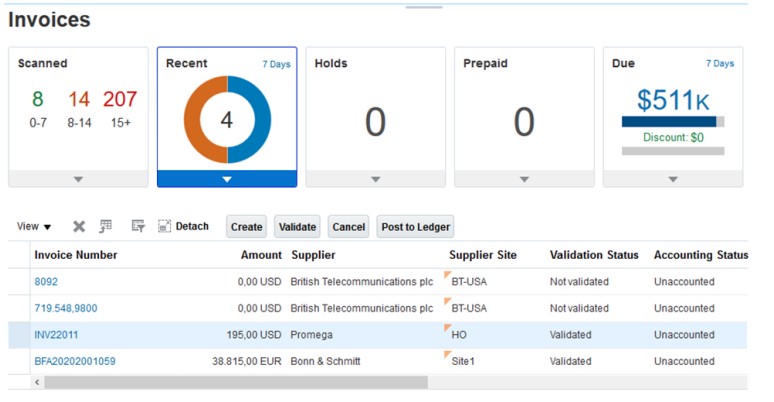
Oracle Financials Cloud is a part of Oracle’s cloud-based ERP suite. It provides a comprehensive set of financial management features, including general ledger, accounts payable, accounts receivable, and fixed assets management.
4. Customer Relationship Management Systems (CRMS)
Customer Relationship Management Systems (CRMS) are software solutions or platforms that enable businesses to manage and maintain relationships with their customers. These systems consolidate customer information, interactions, and transactions in a centralized database, providing a comprehensive view of each customer’s history and preferences.
CRMS facilitates various tasks, such as tracking sales leads, managing customer inquiries, automating marketing campaigns, and improving customer service, with the ultimate goal of enhancing customer satisfaction and fostering long-term loyalty.
Here are five examples of CRMS:
1. Salesforce

Salesforce is one of the most popular and widely used cloud-based CRMS platforms that offer a range of tools for sales, marketing, customer service, and analytics.
2. HubSpot CRM
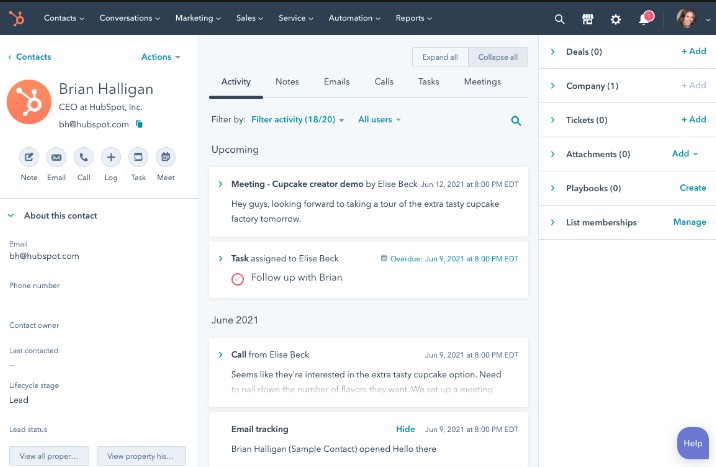
HubSpot CRM is a user-friendly and robust CRMS that provides features for managing contacts, deals, tasks, and marketing automation.
3. Zoho CRM
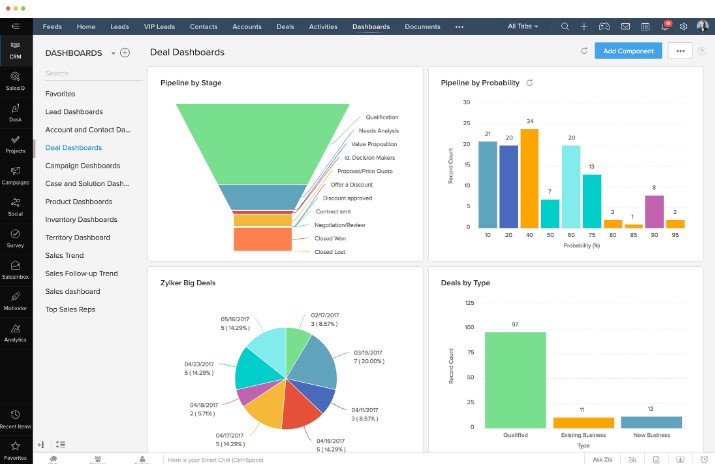
Zoho CRM is a comprehensive CRMS solution that caters to businesses of all sizes, offering sales automation, marketing automation, analytics, and multichannel communication capabilities.
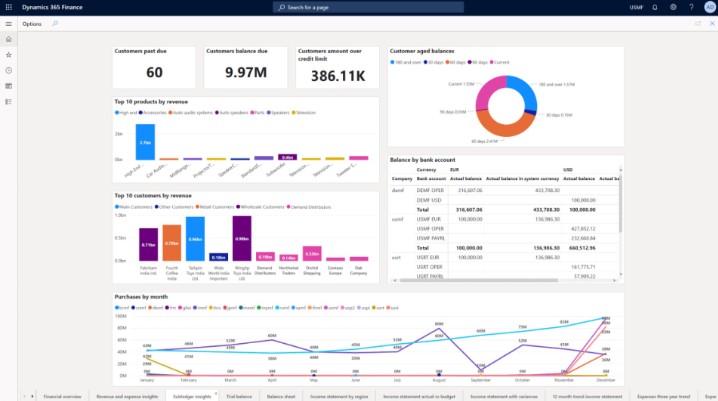
Microsoft Dynamics 365 is an integrated suite of business applications, including CRM, designed to streamline sales, marketing, and customer service processes.
5. Pipedrive
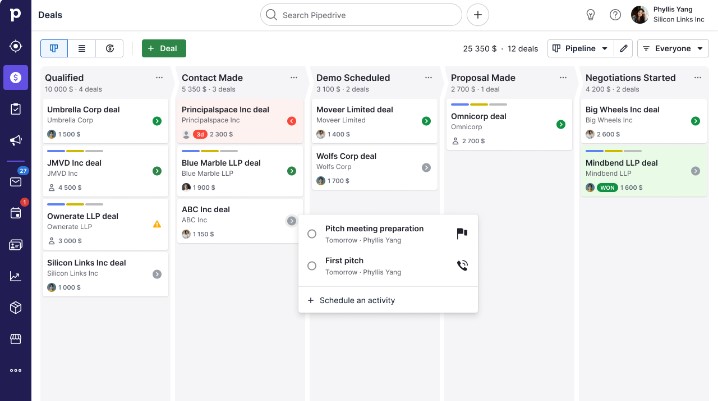
Pipedrive is a sales-focused CRMS that helps sales teams manage leads, deals, and contacts in a visual and organized way.
5. Business Intelligence (BI) Tools
Business Intelligence (BI) tools are software applications and technologies that gather, process, analyze, and visualize data to provide actionable insights for businesses. These tools enable organizations to make data-driven decisions, identify trends, spot opportunities, and address challenges effectively.
BI tools can connect to various data sources, such as databases, spreadsheets, and cloud-based applications, and present the information in the form of dashboards, reports, charts, and graphs, making complex data easily understandable and accessible to all levels of users. With BI tools, businesses can gain a deeper understanding of their operations, customers, and market trends, leading to better strategic planning and improved performance.
1. Tableau

Tableau is a powerful data visualization and analytics tool that allows users to create interactive dashboards and reports, making it easy to explore and understand data.
2. Power BI
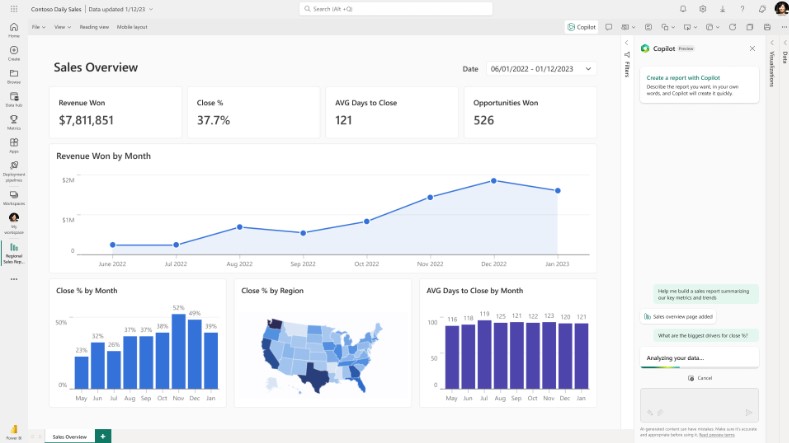
Power BI, developed by Microsoft, is a cloud-based business analytics service that enables users to visualize and share data insights across the organization.
3. QlikView

QlikView is a data discovery and visualization tool that provides real-time data analysis and interactive visualizations for better decision-making.
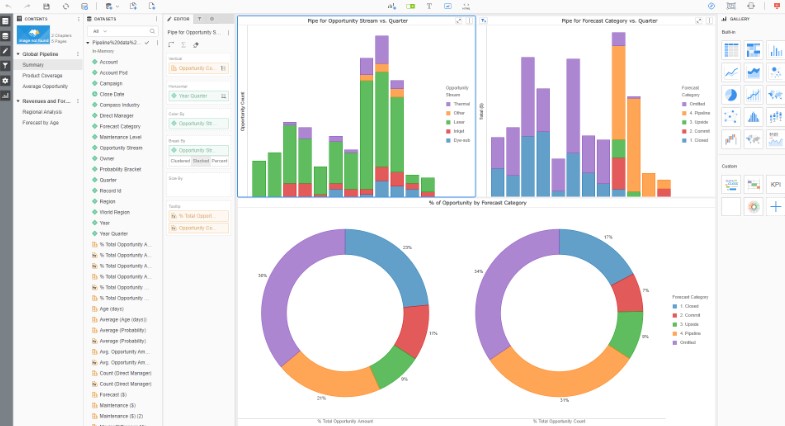
MicroStrategy offers a comprehensive BI platform with robust analytics and reporting capabilities, allowing organizations to access and analyze large datasets efficiently.
5. Looker

Looker is a modern BI platform that allows users to explore, analyze, and share data insights with its user-friendly interface and customizable dashboards.
You might also like: Top 11 Best Email Services that Don’t Require a Phone Number
Frequently Asked Questions
How do Companies Use Business Technology?
Companies use business technology to enhance efficiency, streamline operations, and gain a competitive advantage in the modern digital landscape. They leverage various technological tools, such as enterprise resource planning (ERP) systems, customer relationship management (CRM) software, and data analytics platforms, to optimize processes, manage resources effectively, and make data-driven decisions.
Business technology facilitates seamless communication and collaboration among teams, allowing for faster and more informed decision-making. Additionally, companies use technology to expand their market reach through e-commerce platforms, digital marketing strategies, and online customer support.
Overall, business technology is instrumental in driving innovation, improving customer experiences, and achieving sustainable growth in today’s rapidly evolving business environment.
What technology is important in business?
Several technologies are crucial for businesses to remain competitive and thrive in today’s fast-paced digital world. Some of the most important technologies in business include:
- Cloud Computing
- Big Data and Analytics
- Artificial Intelligence and Machine Learning
- Internet of Things
- Cybersecurity Solutions
- Mobile Technology
- Enterprise Resource Planning Systems
- Customer Relationship Management Software
- Digital Marketing Tools
- Collaboration and Communication Tools
Our Verdict: What are the 5 most common types of business technology?
This article should answer your question, “What are the 5 most common types of business technology?” These types of technology should help your small business in the industry. Since we’ve provided samples of these technologies as well, you should be able to identify which one suits your needs and preferences.
You might also like: 4 Things a Computer Must Have for Functionality





